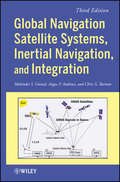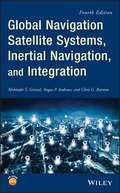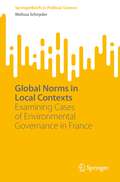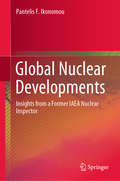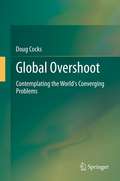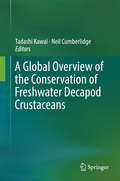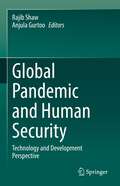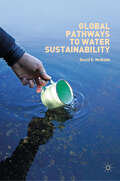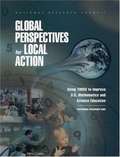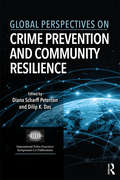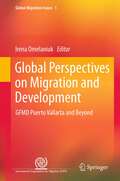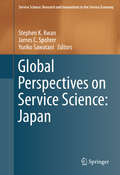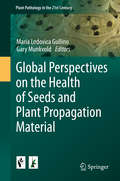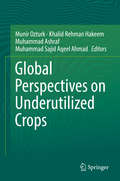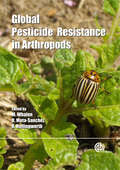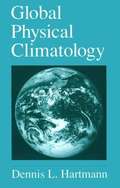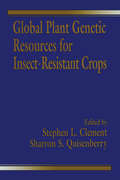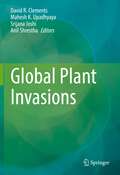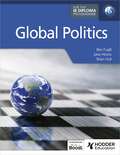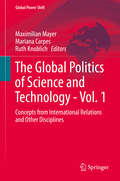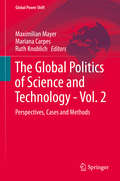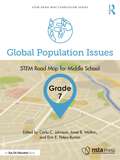- Table View
- List View
The Global Movement and Tracking of Chemical Manufacturing Equipment: A Workshop Summary
by Kathryn HughesDual-use applications for chemical manufacturing equipment have been recognized as a concern for many years, and export-control regulations worldwide are in place as a result. These regulations, in conjunction with the verification and inspection requirements of Article VI of the Chemical Weapons Convention, are designed to support non-proliferation of manufacturing equipment suitable for production of chemical warfare agents. In recent years, globalization has changed the distribution of chemical manufacturing facilities around the world. This has increased the burden on current inspection regimes, and increased the amount of manufacturing equipment available around the world. Movement of that equipment, both domestically and as part of international trade, has increased to accommodate these market shifts. To better understand the movement and tracking of chemical manufacturing equipment of dual-use concern, the Project on Advanced Systems and Concepts for Countering Weapons of Mass Destruction at the Naval Postgraduate School contracted with the Board on Chemical Sciences and Technology of the National Research Council to hold a workshop on the global movement and tracking of chemical manufacturing equipment. The workshop, held in May 2014, looked at key concerns regarding the availability and movement of equipment for chemical manufacturing, particularly used and decommissioned equipment that is of potential dual-use concern. The workshop examined today's industrial, security, and political contexts in which these materials are being produced, regulated, and transferred. The workshop also facilitated discussions about current practices, including consideration of their congruence with current technologies and security threats in the global chemical industrial system. "The Global Movement and Tracking of Chemical Manufacturing Equipment" summarizes the presentations and discussion of the event.
Global Navigation Satellite Systems, Inertial Navigation, and Integration
by Mohinder S. Grewal Angus P. Andrews Chris G. BartoneAn updated guide to GNSS, and INS, and solutions to real-world GNSS/INS problems with Kalman filtering Written by recognized authorities in the field, this third edition of a landmark work provides engineers, computer scientists, and others with a working familiarity of the theory and contemporary applications of Global Navigation Satellite Systems (GNSS), Inertial Navigational Systems, and Kalman filters. Throughout, the focus is on solving real-world problems, with an emphasis on the effective use of state-of-the-art integration techniques for those systems, especially the application of Kalman filtering. To that end, the authors explore the various subtleties, common failures, and inherent limitations of the theory as it applies to real-world situations, and provide numerous detailed application examples and practice problems, including GNSS-aided INS (tightly and loosely coupled), modeling of gyros and accelerometers, and SBAS and GBAS. Drawing upon their many years of experience with GNSS, INS, and the Kalman filter, the authors present numerous design and implementation techniques not found in other professional references. The Third Edition includes: Updates on the upgrades in existing GNSS and other systems currently under development Expanded coverage of basic principles of antenna design and practical antenna design solutions Expanded coverage of basic principles of receiver design and an update of the foundations for code and carrier acquisition and tracking within a GNSS receiver Expanded coverage of inertial navigation, its history, its technology, and the mathematical models and methods used in its implementation Derivations of dynamic models for the propagation of inertial navigation errors, including the effects of drifting sensor compensation parameters Greatly expanded coverage of GNSS/INS integration, including derivation of a unified GNSS/INS integration model, its MATLAB® implementations, and performance evaluation under simulated dynamic conditions The companion website includes updated background material; additional MATLAB scripts for simulating GNSS-only and integrated GNSS/INS navigation; satellite position determination; calculation of ionosphere delays; and dilution of precision.
Global Navigation Satellite Systems, Inertial Navigation, and Integration
by Mohinder S. Grewal Angus P. Andrews Chris G. BartoneCovers significant changes in GPS/INS technology, and includes new material on GPS, GNSSs including GPS, Glonass, Galileo, BeiDou, QZSS, and IRNSS/NAViC, and MATLAB programs on square root information filtering (SRIF) This book provides readers with solutions to real-world problems associated with global navigation satellite systems, inertial navigation, and integration. It presents readers with numerous detailed examples and practice problems, including GNSS-aided INS, modeling of gyros and accelerometers, and SBAS and GBAS. This revised fourth edition adds new material on GPS III and RAIM. It also provides updated information on low cost sensors such as MEMS, as well as GLONASS, Galileo, BeiDou, QZSS, and IRNSS/NAViC, and QZSS. Revisions also include added material on the more numerically stable square-root information filter (SRIF) with MATLAB programs and examples from GNSS system state filters such as ensemble time filter with square-root covariance filter (SRCF) of Bierman and Thornton and SigmaRho filter. Global Navigation Satellite Systems, Inertial Navigation, and Integration, 4th Edition provides: Updates on the significant upgrades in existing GNSS systems, and on other systems currently under advanced development Expanded coverage of basic principles of antenna design, and practical antenna design solutions More information on basic principles of receiver design, and an update of the foundations for code and carrier acquisition and tracking within a GNSS receiver Examples demonstrating independence of Kalman filtering from probability density functions of error sources beyond their means and covariances New coverage of inertial navigation to cover recent technology developments and the mathematical models and methods used in its implementation Wider coverage of GNSS/INS integration, including derivation of a unified GNSS/INS integration model, its MATLAB implementations, and performance evaluation under simulated dynamic conditions Global Navigation Satellite Systems, Inertial Navigation, and Integration, Fourth Edition is intended for people who need a working knowledge of Global Navigation Satellite Systems (GNSS), Inertial Navigation Systems (INS), and the Kalman filtering models and methods used in their integration.
Global Norms in Local Contexts: Examining Cases of Environmental Governance in France (SpringerBriefs in Political Science)
by Melissa SchnyderThis Brief discusses the translation of global environmental norms across local contexts in France. It provides a snapshot of how global-level environmental norms travel vertically across levels of governance, from the global to the local, and asks how global environmental norms are (re)interpreted by local-level actors and translated to a particular local context. Chapters focus on three in-depth case studies, each involving multi-stakeholder environmental governance: (1) the Cerbère-Banyuls Marine Nature Reserve, (2) the Thau Fisheries Local Action Group (FLAG), and (3) the Biovallée biodistrict. In each of these cases, the author assesses how twilight norms are used to frame, promote, and generally develop a local discourse that centers on environmental conservation and sustainability. By combining concepts from the literature on norm localization with processes from the literature on norm-based institutional change, this Brief will generate new insights on the dynamic aspects of norm translation. As such, it will be of interest to researchers studying environmental politics, comparative policy, governance, and norms.
Global Nuclear Developments: Insights from a Former IAEA Nuclear Inspector
by Pantelis F. IkonomouWritten by a former International Atomic Energy Agency (IAEA) nuclear inspector and nuclear security expert, this book provides a comprehensive and authentic overview of current global nuclear developments. The author provides detailed insights into current and past nuclear crises and reveals the technical capabilities, political strategies and motives of nuclear weapon owners. By analyzing the nuclear programs and strategies of various countries, including the USA, Russia, China, Great Britain and France, this book highlights the existing global nuclear threat and the risks it entails for humanity. It also describes the current blockades and suggests possible ways out. Given its scope, the book will appeal to scholars and policymakers interested in gaining new insights into sensitive or complex nuclear programs in various countries.
Global Overshoot
by Doug CocksGlobal Overshoot is a multidisciplinary analysis (including history and pre-history) from an ecological and evolutionary perspective of the contemporary world system. This book compares and critiques attitudes held by people with different world views to the hypothetical prospect of large widespread falls in quality of life. It also draws insights from these two analyses to develop and suggest a philosophy of Ecohumanism to people of good will who want to think constructively about the world's converging problems, i.e. think altruistically and 'think like an evolving ecosystem.'
A Global Overview of the Conservation of Freshwater Decapod Crustaceans
by Tadashi Kawai Neil CumberlidgeThis book introduces updated information on conservation issues, providing an overview of what is needed to advance the global conservation of freshwater decapods such as freshwater crabs, crayfish, and shrimps. Biodiversity loss in general is highest in organisms that depend on intact freshwater habitats, because freshwater ecosystems worldwide are suffering intense threats from multiple sources. Our understanding of the number and location of threatened species of decapods, and of the nature of their extinction threats has improved greatly in recent years, and has enabled the development of species conservation strategies. This volume focuses on saving threatened species from extinction, and emphasizes the importance of the successful implementation of conservation action plans through cooperation between scientists, conservationists, educators, funding agencies, policy makers, and conservation agencies.
Global Pandemic and Human Security: Technology and Development Perspective
by Rajib Shaw Anjula GurtooThis book highlights how the human security aspect has been affected by the global pandemic, based on the specific case study, field data, and evidence. COVID-19 has exemplified that the pandemic is global, but its responses are local. The responses depend on national governance and policy framework, use of technology and innovation, and people’s perceptions and behavior, among many others. There are many differences in how the pandemic has affected the rich and the poor, urban and rural sectors, development and fiscal sectors, and developed and developing nations and communities.Echoing human security principles, the 2030 Agenda emphasized a “world free of poverty, hunger, disease and want… free of fear and violence… with equitable and universal access to quality education, health care, and social protection….to safe drinking water and sanitation… where food is sufficient, safe, affordable and nutritious… where habitats are safe, resilient and sustainable…and where there is universal access to affordable, reliable and sustainable energy.” These basic human security [PA1] principles and development agenda are highly affected by the global pandemic worldwide, irrespective of its development and economic status. Thus, the book highlights the nexus between human security and development issues. It has two major pillars, one is the development and the other is technology issues. These two inter-dependent topics are discussed in the perspective of the global pandemic, making this the most important feature of this book.While the world is still in the middle of a pandemic, and possibly other natural and biological hazards may affect peoples’ lives and livelihoods in the future, this book provides some key learning, which can be used to cope with future uncertainties, including climate risks. Thus, the book is timely and relevant to wider readers.
Global Pathways to Water Sustainability
by David E. McNabbThis book investigates the current and future state of freshwater and the global drive to achieve the UN sustainability goal. It first explores the major barriers to achieving the goal and then examines some of the programs water managers are adopting to overcome those barriers. These programs include finding new ways to supplement existing water supplies, and greater acceptance of alternative supplies, such as recycled waste water and desalination; green infrastructures, and rain and storm water harvesting. It concludes with two chapters on water management tools, including asset management and strategic planning, which are of particular interest to small water and wastewater utilities.
GLOBAL PERSPECTIVES for LOCAL ACTION: Using TIMSS to Improve U.S. Mathematics and Science Education
by Committee on Science Education K-12The National Academies Press (NAP)--publisher for the National Academies--publishes more than 200 books a year offering the most authoritative views, definitive information, and groundbreaking recommendations on a wide range of topics in science, engineering, and health. Our books are unique in that they are authored by the nation's leading experts in every scientific field.
Global Perspectives for Local Action: Using TIMSS to Improve U.S. Mathematics and Science Education
by National Research CouncilThe Third International Mathematics and Science Study (TIMSS) raised the alarm about U.S. mathematics and science education. Most Americans are now aware that U.S. students lag behind their peers in other developed nations. In one state, the legislature reacted by lengthening the school year, assuming that more time on academic content would boost student performance. Some educators have fixed the blame on the mathematics and science curricula typically used in U.S. schools.Does the problem lie in the curricula, instruction, or the system of support available to teachers? This book presents the first comprehensive analysis of TIMSS study--a half-million students from 15,000 schools around the world. It presents detailed reports on three major aspects of education, including curriculum issues, teaching practices, and school support.
Global Perspectives on Crime Prevention and Community Resilience (International Police Executive Symposium Co-Publications)
by Diana Scharff Peterson Dilip K. DasInspired by the dialogue between practitioners and academics of nearly thirty countries, this edited volume includes updated articles on global crime prevention initiatives and best practices in building community resilience presented at the International Police Executive Symposium’s (IPES) 25th annual meeting in Sofia, Bulgaria in 2014. A new book in the highly-regarded IPES Co-Publications series, Global Perspectives on Crime Prevention and Community Resilience offers strategies for crime and violence prevention and community initiatives for crime reduction, while promoting current best practices for police effectiveness, safety, and professionalism. The book includes eighteen chapters from police leaders, practitioners and academics around the world in efforts to demonstrate effective strategies for the prevention of crime and innovative techniques in assisting crime victims. In an increasingly global reality, this text gives voice to valuable members of the international policing community.
Global Perspectives on Migration and Development: GFMD Puerto Vallarta and Beyond
by Irena OmelaniukThis volume is the first in a new Springer series to examine one of humanity's most pressing concerns: global migration and its implications for development. As population mobility grows in an ever more crowded world, the Global Forum on Migration and Development (GFMD) has emerged as the most important global mechanism to deal with the urgent challenges it presents. This book explores fresh strategies proposed by the GFMD in its fourth year of operation in Mexico and beyond. Interrogating the relationship between migration and development, the papers advance the Global Forum's aims of reducing poverty and empowering low-income families everywhere. In 2010, there were 214 million international migrants worldwide, nearly two and a half times the number in 1965. By 2050, international migration is likely to expand sharply in scale, reach and complexity, due to growing demographic disparities, environmental change, shifting global political and economic dynamics, technological innovations and social networks. Migration can bring substantial gains to families in less-developed countries, and mobile labor is an axiomatic feature of the global economy. Yet outward migration of skilled workers can seriously retard development at home, and exert pressure on wages in host nations. Balancing these and other conflicting concerns requires the substantive and expert discourse offered in this book. Contributors discuss, and propose concrete solutions to, vital issues such as the debilitating costs of cross-border labor recruitment and the provision of social and income protection for foreign contract workers. With suggestions on how to facilitate connections between transnational families, and gender- and family-sensitive immigration regimes, this book aims to foster collaborative intergovernmental links as well as partnerships between governments, civil society and international organizations. It shows how the GFMD can positively influence policy and institutional behavior while addressing wider systemic factors in protecting mobile workers.
Global Perspectives on Service Science: Japan
by Stephen K. Kwan James C. Spohrer Yuriko SawataniThis contributed volume presents the experiences,challenges, trends, and advances in Service Science from Japan's perspective. As the global economy becomes more connected and competitive, many economiesdepend the service sector on for growth and prosperity. A multi-disciplinary approach to ServiceScience can potentially transform service industries through research,education, and practice. Offering a forum for best practices in Service Science within Japan, the volume benefits its audience by sharing viewpoints from a wide range of geographical regions and economies. The book is organized as follows: * Foundationsof Service Science and the service industry sector * Public/Privatesector partnerships, policies, trade in services, future prospects * Contributionsfrom science, social science, management, engineering, design as well asindustry sector perspectives * Road-maps,methodology, business development, strategies and innovative models,application of information technology, performance measures, and service systemdesign * Educationand workforce development * Casestudies from practice, research and educational community * FutureDirections in Japan This book includes three Forewords written by key leaders in Service Science: * Takayuki Aso(Ministry of Education, Culture, Sports, Science & Technology in Japan) * Yasuhiro Maeda(Director, Service Affairs Policy Division METI) * Norihisa Doi (Professor Emeritus, Keio University and Service Science, Solutionsand Foundation Integrated Research (S3FIRE) Program Officer, JST/RISTEX)
Global Perspectives on the Health of Seeds and Plant Propagation Material
by Maria Lodovica Gullino Gary MunkvoldThis volume continues the series of books on "Plant Pathology in the 21st Century", and contains the papers given at the 10th International Congress of Plant Pathology (ICPP 2013) held in Beijing, August 25-30, 2013 concerning seed health. Many pathogens are transmitted throughout infected seeds and propagation material . The fact that propagation material production is very much concentrated in few establishments, favors the quick spread of new diseases throughout seed commercialization. This phenomenon is very much accelerated in a globalized system. The book covers case studies of contamination, aspects of detection and diagnosis as well as disease management strategies, with special emphasis towards seed treatments with unconventional products. This book will be useful for all plant pathologists as well as students in advanced courses.
Global Perspectives on Underutilized Crops
by Muhammad Sajid Aqeel Ahmad Muhammad Ashraf Khalid Rehman Hakeem Munir OzturkIncrease in world population, extreme weather conditions, decrease in fresh water supplies, and changes of dietary habits are major issues that affect global food security. We are expected to face the challenges of land use by 2050 because population will reach 9 billion while agricultural productivity losses are expected due to overuse of lands. How can we feed the next generations in a manner that respects our finite natural resources? Managing our resources in a sustainable way have only begun for selected crops. Much remains to be done to increase food yield. Cropping practices capable of sustainable production need to be elaborated, especially in fragile ecosystems. Typical applications will include the improvement and use of genetic resources; crop management and diversification; diffusion of improved varieties; development of cropping systems; sustainable cropping systems for areas prone to environmental degradation; use of agro-ecological data for crop production forecasting; and networks for regional coordination, and data exchange. The impetus behind this book is to bring attention to a cropping system that bears direct relevance to sustainable agriculture and food security. “Underutilized” crops are found in numerous agricultural ecosystems and often survive mainly in marginal areas. It is timely to review their status because, in recent decades, scientific and economic interests have emerged which focus on lesser-known cultivated species. Underutilized crops have a great potential to alleviate hunger directly, through increasing food production in challenging environments where major crops are severely limited.“Global Perspectives on Underutilized Crops” is therefore topical and highlights the unmet agricultural challenges that we face today. This book is an important resource for students and researchers of crop science and agricultural policy makers.
Global Pesticide Resistance in Arthropods
by Mark Edward Whalon D. Mota-Sanchez Robert M. HollingworthPesticide resistance has had a substantial impact on crop production and has been an important driver of change in modern agriculture, animal production and human health. Focusing specifically on arthropods, this book provides a comprehensive review of relevant issues in pesticide resistance. Detailed listings and references to all documented reports of resistance from around the world are included.
Global Physical Climatology
by Dennis L. HartmannThis textbook provides an introduction to the physical interactions in the climate system, viewed from a global perspective and is a useful text for upper-division undergraduate physical science majors and, especially in the later chapters, graduate students.
Global Plant Genetic Resources for Insect-Resistant Crops
by Stephen L. ClementAn excellent reference book for plant breeders and entomologists, Global Plant Genetic Resources for Insect-Resistant Crops combines germplasm preservation with use in insect-resistant crop development and basic research. The contributions of the authors represent the efforts, cooperation, and understanding of world leaders in the conservation and use of global plant genetic resources for sustainable agricultural production. Concepts addressed include dependency of modern agriculture on chemical pest control and applications of biotechnology in use of natural plant genes for insect-resistant crops. Marketing Class Code: 1E, 1G, 9C
Global Plant Invasions
by David R. Clements Mahesh K. Upadhyaya Srijana Joshi Anil ShresthaInvasive species have inspired concern for many reasons, including economic and environmental impacts in specific jurisdictions within particular countries. However, it is apparent that for some invasive plant species, political borders offer only weak barriers because these species have succeeded in invading many countries, emerging as threats at a global level. With this level of threat, a number of books on invasive plants and invasive species in general have been published in recent years, but none explicitly provides “global” coverage, perhaps because it is only recently that the full geographical, economic and environmental implications of widespread spread and adaptive nature of these particular invasive plants have been recognized.We plan to make this volume unique by profiling plant invasions in explicitly geographical contexts; on the world continents (Chapters 5-11), as well as islands (Chapter 12) and mountains (Chapter 13). This global approach is supported by an overview of invasion biology and recent advances (Chapter 1) and how different communities differ in invasibility (Chapter 2). Global factors influencing invasion are introduced in Chapter 3 (globalized trade) and Chapter 4 (climate change). Key species are profiled through geographic treatments, continent by continent (Chapters 5-11), and for islands (Chapter 12) and mountains (Chapter 13). The impact of invasive plants is highlighted in Chapter 14, both in biotic and economic terms, partly to counter the tendency for the young field of invasion biology to rely too much on anecdotal evidence. This chapters is also designed to bring home the message that these are serious problems that must be dealt with, as covered in the subsequent chapters. The book concludes with three chapters casting light on solutions to the many problems described in the rest of the volume. Chapter 15 features new, innovative technologies that are being developed to monitor and manage invasive plants, and Chapter 16 presents comprehensive strategies for public education and implementation of management on local and global scales. Chapter 17 describes different future scenarios depending on current trends in plant invasion and its management, just as climate change predictions employ various scenarios to project the future. The future is very much up to us, as humanity grapples with the question of how best to strategically meet the problems of global invasive plant problems that we ourselves have created that is further challenged by a changing climate.We are confident that this book will be of interest to invasion biologists, resource managers, and the legion of others who must deal with these invasive plants across the globe on a daily basis.
Global Politics for the IB Diploma (For the IB Diploma)
by Ben Fugill Jane Hirons Brian HullDeveloped in cooperation with the International Baccalaureate®Trust an experienced team of IB educators to help develop the key skills needed to understand global politics with a range of contemporary case studies, different perspectives on political issues provided throughout and extensive assessment support.- Build analytical skills with engaging content comprising of case studies and pedagogy to write them.- Improve performance with knowledge-checking quizzes at the end of each chapter along with essay writing and exam guidance that includes case studies that can be deployed as examples and evidence for Paper 2 responses.- Build inquiry skills through class discussion questions that foster intercultural understanding, open mindedness and respect.- Integrate Theory of Knowledge into your lessons with TOK links and Inquiries, written by our bestselling TOK author John Sprague, that provide real-world examples, case studies and questions.- Develop ATL skills with a range of engaging activities.- Support EAL students with content and support that is tailored to their needs.This coursebook has been reviewed by Melanie Wilson, Head of Global Politics at UWC Southeast Asia.Contents list How to use this book The case study approachCore: Understanding power and global politics 1 Understanding power and global politics Thematic Studies 2 Development and sustainability 3 Peace and conflict 4 Rights and justice 5 Engagement activity/Project 6 Assessment OnlineGlossaryeBook Interactive case studies
Global Politics for the IB Diploma (For the IB Diploma)
by Ben Fugill Jane Hirons Brian HullDeveloped in cooperation with the International Baccalaureate®Trust an experienced team of IB educators to help develop the key skills needed to understand global politics with a range of contemporary case studies, different perspectives on political issues provided throughout and extensive assessment support.- Build analytical skills with engaging content comprising of case studies and pedagogy to write them.- Improve performance with knowledge-checking quizzes at the end of each chapter along with essay writing and exam guidance that includes case studies that can be deployed as examples and evidence for Paper 2 responses.- Build inquiry skills through class discussion questions that foster intercultural understanding, open mindedness and respect.- Integrate Theory of Knowledge into your lessons with TOK links and Inquiries, written by our bestselling TOK author John Sprague, that provide real-world examples, case studies and questions.- Develop ATL skills with a range of engaging activities.- Support EAL students with content and support that is tailored to their needs.This coursebook has been reviewed by Melanie Wilson, Head of Global Politics at UWC Southeast Asia.Contents list How to use this book The case study approachCore: Understanding power and global politics 1 Understanding power and global politics Thematic Studies 2 Development and sustainability 3 Peace and conflict 4 Rights and justice 5 Engagement activity/Project 6 Assessment OnlineGlossaryeBook Interactive case studies
The Global Politics of Science and Technology - Vol. 1
by Maximilian Mayer Mariana Carpes Ruth KnoblichAn increasing number of scholars have begun to see science and technology as relevant issues in International Relations (IR), acknowledging the impact of material elements, technical instruments, and scientific practices on international security, statehood, and global governance. This two-volume collection brings the debate about science and technology to the center of International Relations. It shows how integrating science and technology translates into novel analytical frameworks, conceptual approaches and empirical puzzles, and thereby offers a state-of-the-art review of various methodological and theoretical ways in which sciences and technologies matter for the study of international affairs and world politics. The authors not only offer a set of practical examples of research frameworks for experts and students alike, but also propose a conceptual space for interdisciplinary learning in order to improve our understanding of the global politics of science and technology. This first volume summarizes various time-tested approaches for studying the global politics of science and technology from an IR perspective. It also provides empirical, theoretical, and conceptual interventions from geography, history, innovation studies, and science and technology studies that indicate ways to enhance and rearticulate IR approaches. In addition, several interviews advance possibilities of multi-disciplinary collaboration.
The Global Politics of Science and Technology - Vol. 2
by Maximilian Mayer Mariana Carpes Ruth KnoblichAn increasing number of scholars have begun to see science and technology as relevant issues in International Relations (IR), acknowledging the impact of material elements, technical instruments, and scientific practices on international security, statehood, and global governance. This two-volume collection brings the debate about science and technology to the center of International Relations. It shows how integrating science and technology translates into novel analytical frameworks, conceptual approaches and empirical puzzles, and thereby offers a state-of-the-art review of various methodological and theoretical ways in which sciences and technologies matter for the study of international affairs and world politics. The authors not only offer a set of practical examples of research frameworks for experts and students alike, but also propose a conceptual space for interdisciplinary learning in order to improve our understanding of the global politics of science and technology.<P><P> The second volume raises a plethora of issue areas, actors, and cases under the umbrella notion techno-politics. Distinguishing between interactional and co-productive perspectives, it outlines a toolbox of analytical frameworks that transcend technological determinism and social constructivism.
Global Population Issues, Grade 7: STEM Road Map for Middle School (STEM Road Map Curriculum Series)
by Carla C. Johnson Janet B. Walton Erin E. Peters-BurtonWhat if you could challenge your seventh-grade students to explore mathematical principles as well as global population issues as they consider population density? With this volume in the STEM Road Map Curriculum Series, you can! Global Population Issues outlines a journey that will steer your students toward authentic problem solving while grounding them in integrated STEM disciplines. Like the other volumes in the series, this book is designed to meet the growing need to infuse real-world learning into K–12 classrooms. This interdisciplinary, four-lesson module uses project- and problem-based learning to help students to devise a model for counting populations of a given species on Earth and develop a formal presentation of their models for consideration by a panel of experts. Students will examine species’ ecosystems, explore global populations with an economic and geographical lens, take on the role of an urban planner to develop a megacity that incorporates what they have researched and learned about the consequences of population density and overpopulation, and share literature relevant to their applied species model. To support this goal, students will do the following: · Explore how to gather information about a population and make valid generalizations and inferences from this information · Utilize mathematical practices to complete mathematical explorations · Explore the impact of population density on humans and the environment · Communicate learning and experiences about population density and its influence on humans and the environment through various forms of writing, speaking, and analyzing non-fiction text · Explore the historical, social, geographical, and economic factors related to population density The STEM Road Map Curriculum Series is anchored in the Next Generation Science Standards, the Common Core State Standards, and the Framework for 21st Century Learning. In-depth and flexible, Global Population Issues can be used as a whole unit or in part to meet the needs of districts, schools, and teachers who are charting a course toward an integrated STEM approach.

